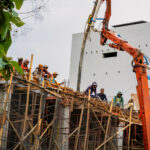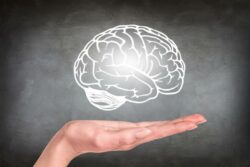Hidden Dangers Lurk: The Shocking Truth About Falls
In this illuminating piece, we explore the often underestimated issue of falls, particularly in our aging population. Through an examination of statistics, health and economic implications, long-term effects, risk factors, and prevention strategies, the article uncovers the stark reality of this silent danger. Aimed at fostering awareness and promoting safety, this article is a crucial read for anyone looking to protect themselves or their loved ones from the devastating consequences of falls.

Key Takeaways
- Falls are a major concern among older people, with more than one out of four experiencing a fall each year.
- Falls can lead to serious injuries, such as broken bones or head injuries, and result in hospitalization for over 800,000 patients annually.
- The costs associated with falls are significant, with Medicare and Medicaid covering 75% of the total medical costs, amounting to over $50 billion in 2015.
- Certain risk factors, including lower body weakness, vitamin D deficiency, difficulties with walking and balance, use of specific medications, and vision problems, increase the likelihood of falls.
Unveiling the Statistics: The Prevalence and Impact of Falls
The dissemination of data pertaining to the prevalence and impact of falls illuminates an undeniable truth: the gravity of this public health issue is far greater than commonly perceived, necessitating immediate and sustained intervention. Falls occur in different age groups and in various settings, with each presenting unique challenges and consequences. For instance, older individuals are more prone to severe injuries, such as hip fractures and traumatic brain injuries. In contrast, falls among the younger generation often result in less severe, albeit still significant, consequences. The settings in which falls occur also play a critical role. Public spaces, homes, and healthcare facilities represent the most common settings. This reinforces the need for comprehensive strategies to mitigate the risks and effects of falls.
The High Price of Falling: Economic and Health Consequences
Undeniably, the economic burden and health implications associated with falls present a significant challenge, demanding our collective attention and urgent action. The hidden costs, both financial burden and healthcare expenses, are staggering, with a reported $50 billion in medical costs in 2015 alone. This figure represents not just the financial strain on healthcare systems, but also the personal hardship for individuals and families.
The ripple effect of falls extends beyond mere economics, impacting quality of life and independence. Sufferers often experience a decreased ability to perform daily activities, leading to loss of self-reliance. This, in turn, can lead to isolation and depression. It is crucial that we not only acknowledge the high price of falling but actively work towards comprehensive fall prevention strategies.
The Silent Aftermath: Long-term Effects of Falls
Long-term effects of falls, such as chronic pain and mobility issues, can significantly impact an individual's quality of life, and they often lead to social isolation and mental health challenges. The fear of recurring falls can exacerbate these issues, creating a cycle of fear, isolation, and declining health. Fall prevention strategies are crucial in breaking this cycle. Implementing measures such as strength and balance exercises, regular vision checks, and medication reviews can minimize the risk of falls significantly. Additionally, making homes safer by reducing trip hazards and improving lighting can also help. The goal is to not only prevent physical injuries but also to mitigate the psychological impact, thereby enhancing the quality of life of vulnerable individuals.
Unseen Threats: Identifying Risk Factors of Falls
Recognizing unseen threats and understanding the risk factors of falls, such as lower body weakness, medication side effects, and vision problems, is crucial in preventing accidents and ensuring the safety of vulnerable individuals. Identifying risk factors, which also include Vitamin D deficiency and difficulties with walking and balance, can significantly reduce the likelihood of falls. Preventive measures, such as regular health check-ups, medication reviews, strength and balance exercises, and a safe home environment, should be prioritized. Vision should be checked annually, and the home environment should be made safer by removing tripping hazards and improving lighting. By being informed, empathetic and proactive, we can significantly reduce the risk and incidence of falls, thereby enhancing the quality of life for those we care about.
Staying Upright: Proactive Steps for Fall Prevention
Adopting proactive measures for fall prevention, such as regular strength and balance exercises, is crucial in maintaining one's independence and overall quality of life. Fall prevention strategies aim to reduce both the risk of falling and the severity of injury should a fall occur. They encompass lifestyle modifications, including the importance of regular exercise. Incorporating balance, strength, and flexibility exercises into your daily routine can significantly decrease the risk of falls. Regular assessments with healthcare providers, maintaining good vision, and ensuring a safe home environment are also integral components of these strategies. Understanding and implementing these measures can significantly enhance one's safety and confidence, thus maintaining their autonomy and overall wellbeing. Remember, proactive steps towards fall prevention are steps towards a safer, healthier life.
Frequently Asked Questions
What Are Some Mental Health Impacts of Frequent Falls in Older Adults?
Frequent falls in older adults can lead to significant mental health impacts. One critical impact is emotional trauma, which can stem from the fear of falling again, potentially limiting their independence. This fear can also lead to social isolation, as individuals may avoid activities they once enjoyed in order to prevent further falls. It's crucial that these psychological effects are addressed alongside physical injuries to ensure a comprehensive approach to fall prevention and recovery.
How Does Climate or Weather Conditions Influence the Risk of Falls in the Elderly?
Weather conditions significantly influence the risk of falls among the elderly. Adverse weather, such as ice, snow, or rain, can create slippery surfaces leading to increased fall risk. To mitigate this, weather adaptations are crucial. These may include wearing non-slip footwear, using walking aids, or avoiding outdoor activities during severe weather. It is essential to educate the elderly about these adaptations and strategies to prevent potential injuries due to falls.
Are There Any Specific Health Conditions or Diseases That Increase the Risk of Falls in Older People?
Certain health conditions significantly increase the risk of falls in older individuals. This includes the impact of certain medications which can cause dizziness or sleepiness, and diseases affecting balance or muscle strength. Furthermore, vision deterioration due to age or conditions like glaucoma and cataracts contribute to the risk, as they impair depth perception and clarity. Regular health check-ups, medication reviews, and optometrist visits are crucial in managing these risks.
What Role Does Family History or Genetics Play in the Risk of Falls?
While genetic testing may reveal predispositions to certain conditions affecting balance or bone strength, it doesn't directly predict fall risk. However, genetics can indirectly influence fall risk through conditions like osteoporosis. Exercise benefits, such as improved strength and balance, can significantly reduce fall risk, regardless of genetic predisposition. Therefore, a combination of understanding one's genetic makeup and incorporating regular exercise can be an effective strategy in fall prevention.
How Effective Are Assistive Devices, Like Canes or Walkers, in Preventing Falls Among the Elderly?
Assistive devices like canes or walkers, under the umbrella of 'Device Accessibility' and 'Assistive Technology Innovation', serve a critical role in fall prevention among elderly individuals. These tools effectively enhance stability, balance, and mobility, substantially reducing the risk of falls. However, their utility is maximized when complemented with strength and balance exercises, regular vision checks, and necessary home modifications. It's essential that such devices are appropriately fitted and users are adequately trained for optimal benefit.
Conclusion
Through rigorous scrutiny of the prevalence, impact, and risk factors of falls, it becomes evident that this everyday danger presents a tangible threat to an aging population. The economic, physical, and psychological toll it exacts is substantial. However, awareness and proactive measures can significantly mitigate these risks. It is essential to recognize the hidden dangers of falls and to take informed steps towards prevention, ensuring the safety and well-being of the most vulnerable members of our society.

This post has been generated by AI and was not reviewed by editors. This is Not legal advice. Please consult with an attorney.




